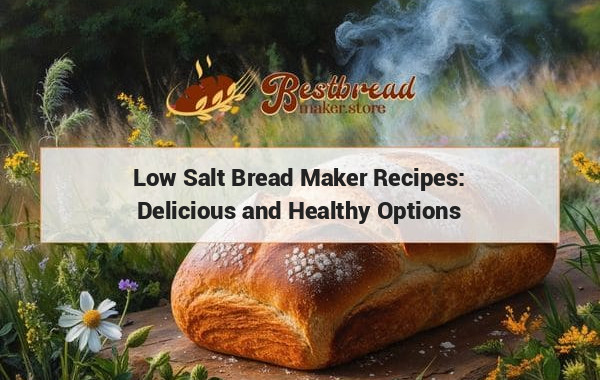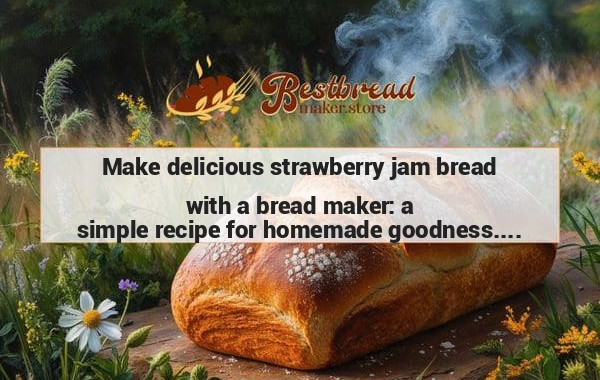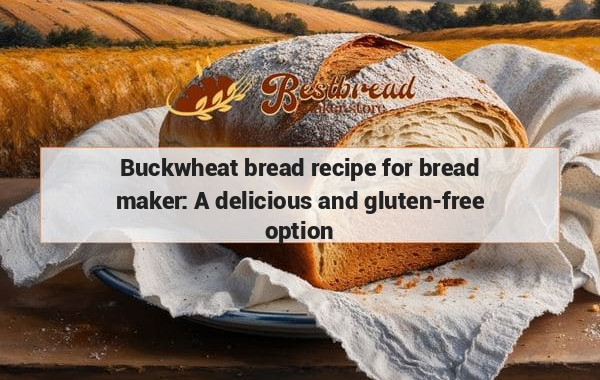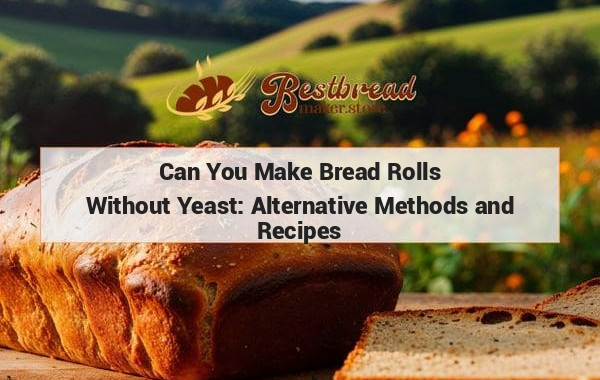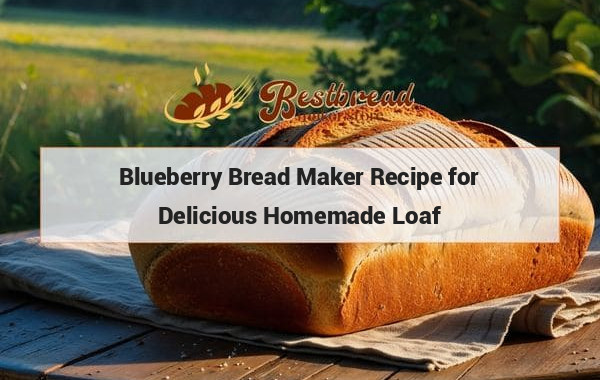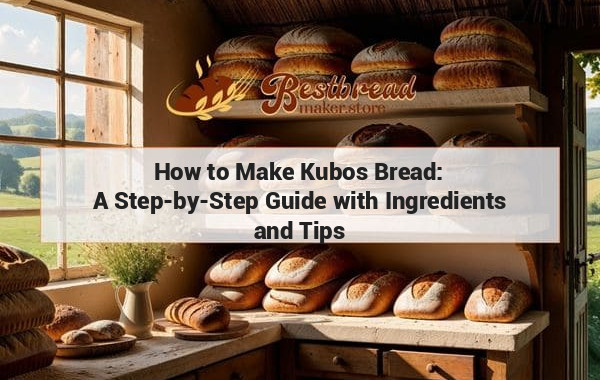Low Salt Bread Maker Recipes: Delicious and Healthy Options
Discover delicious low salt bread maker recipes that are both healthy and tasty. With these recipes, you can enjoy fresh homemade bread without worrying about high sodium content. Try out different variations like whole wheat, oatmeal, or even gluten-free options to suit your dietary preferences. Make your own bread at home with these easy and nutritious recipes.
Low salt bread maker recipes are becoming more popular as people look for healthier bread alternatives without sacrificing taste. Here's how you can create delicious low-sodium bread with your bread maker.
Key Takeaways
Low salt bread can be made easily with a bread maker by adjusting traditional recipes. Using ingredients like whole grains and herbs, you can create flavorful bread without relying on salt.
Low Salt Bread: Why It Matters and How to Start
For those trying to reduce sodium in their diet, making bread at home with a bread maker is an excellent option. Store-bought bread often contains high levels of salt, which can negatively impact your health. But by making bread at home, you have full control over the ingredients, allowing you to limit or eliminate added salt.
What is a Low Salt Bread Maker Recipe?
A low salt bread maker recipe is a modified version of traditional bread recipes. These recipes are designed to retain the bread’s flavor and texture while reducing or omitting salt. Most people think salt is essential for bread-making, but with the right ingredients, it's possible to bake delicious bread without it.
The Role of Salt in Bread Making
Traditionally, salt has played a role in controlling yeast activity and enhancing flavor. Without salt, you may need to adjust the yeast quantity or use alternative flavorings to achieve a similar taste profile. The good news is that your bread maker handles most of the work, so these adjustments are easy to implement.
How to Make Low Salt Bread in Your Bread Maker
The process of making low salt bread is almost identical to regular bread making, but with slight adjustments in ingredients and proportions. Follow these steps to create your own low sodium bread at home.
Choosing the Right Flour
The type of flour you choose will affect the texture and taste of your bread. Whole wheat or spelt flour is an excellent choice because they naturally provide more flavor, which can help compensate for the reduced salt. You can also experiment with mixing different types of flour, such as rye or oat flour.
Adding Flavor Without Salt
Herbs and spices are great additions that can replace the need for salt. Garlic powder, onion powder, rosemary, or thyme work particularly well in low salt bread recipes. You can also try adding seeds like sesame or flax for additional texture and taste.
Adjusting Yeast and Water Content
Salt helps control yeast activity. In its absence, you may need to reduce the yeast slightly to prevent over-proofing, which can make the bread overly airy. Adding a bit of sugar can help balance the flavors and aid the yeast in the rising process.
Key Ingredients for Delicious Low Salt Bread
To make sure your low salt bread comes out flavorful and satisfying, choose ingredients that enhance taste without adding sodium.
Whole Grains and Seeds
Whole grains like wheat, oats, and rye naturally offer richer flavors than refined flour. Additionally, seeds like sunflower, flax, or pumpkin seeds add a satisfying crunch and subtle nutty taste. You can also use quinoa or millet for added texture.
Herbs and Spices
Herbs such as thyme, oregano, or basil bring a burst of flavor to your bread. You can even try combinations like garlic and rosemary for a savory twist. The key is to be creative with herbs and spices to enhance the overall flavor of your bread.
Sweeteners
Adding a touch of sweetness can balance the flavors in your low salt bread. Honey, agave, or maple syrup can add depth without overpowering the bread. Just be mindful not to add too much, as it can alter the bread’s texture.
Fats for Flavor and Texture
Healthy fats such as olive oil or butter not only improve the texture of your bread but also add a subtle richness that makes up for the lack of salt. These fats help the dough come together smoothly and contribute to the softness of the bread.
Low Salt Bread Recipes You Can Try at Home
Here are some simple low salt bread recipes you can try in your bread maker:
Basic Low Salt Whole Wheat Bread
- 3 cups whole wheat flour
- 1 tbsp honey
- 1/2 tsp yeast
- 1 1/4 cups warm water
- 2 tbsp olive oil
- 1/4 cup sunflower seeds (optional)
Combine all ingredients in your bread maker, select the whole wheat setting, and press start. Enjoy fresh, low sodium bread with a nutty flavor.
Herb-Infused Low Salt Bread
- 3 cups white or whole wheat flour
- 1 tsp garlic powder
- 1 tsp dried rosemary
- 1 tbsp olive oil
- 1/2 tsp yeast
- 1 1/4 cups warm water
This recipe uses garlic and rosemary to enhance the flavor. The bread will come out aromatic and packed with herbal goodness.
Common Mistakes to Avoid When Making Low Salt Bread
Even with a bread maker, there are a few common pitfalls to avoid when baking low salt bread:
Not Adjusting Yeast Proportions
Without salt to control yeast activity, your bread might rise too quickly or too much. Be sure to reduce the amount of yeast slightly and keep an eye on the dough.
Ignoring Flavor Alternatives
Skipping salt without compensating for it with herbs, spices, or seeds can leave your bread tasting bland. Always add alternative flavorings to enhance the taste.
Overkneading the Dough
Using a bread maker ensures your dough is kneaded properly, but be cautious of overkneading. This can make the bread too tough and chewy.
Frequently Asked Questions (FAQs)
1. Can I completely omit salt from any bread recipe?
Yes, you can. However, omitting salt might affect the flavor and yeast activity, so it’s important to add other ingredients like herbs or reduce the yeast slightly.
2. Is homemade low salt bread healthier than store-bought bread?
Definitely! When you make bread at home, you control the ingredients, ensuring it's lower in salt and free from preservatives often found in store-bought bread.
3. What are the best herbs to use in low salt bread?
Herbs like rosemary, thyme, garlic powder, and oregano work well to replace salt’s flavor. You can experiment with different combinations to find your favorite.
4. How do I store homemade low salt bread?
Store it in an airtight container or freeze it for longer shelf life. Without preservatives, homemade bread tends to go stale faster, so freezing portions is a great option.
5. Can I add seeds to low salt bread recipes?
Absolutely! Seeds like sunflower, flax, and sesame add both flavor and texture to your bread. They also boost the nutritional content, making your bread even healthier.
By making your own low salt bread, you can enjoy fresh, healthy bread with full control over the ingredients. It's a simple, rewarding process, especially with a bread maker. If you’re also looking for the best bread maker for your needs, check out bestbreadmaker.store for comprehensive reviews and recommendations to help you find the perfect machine.

